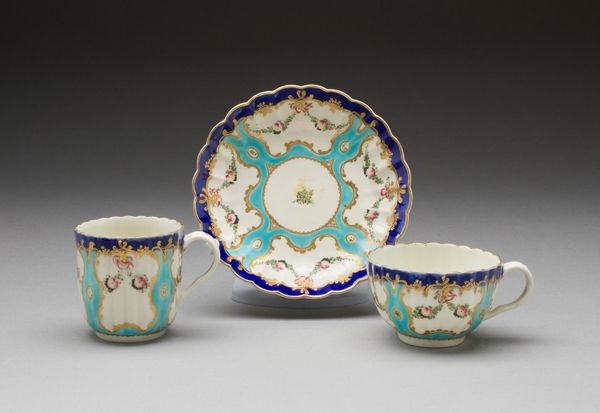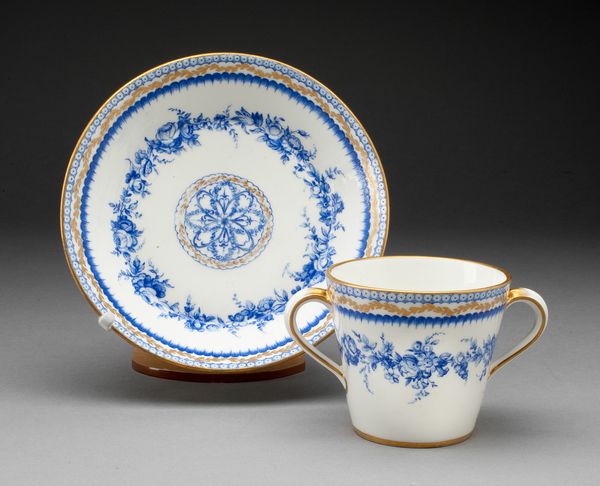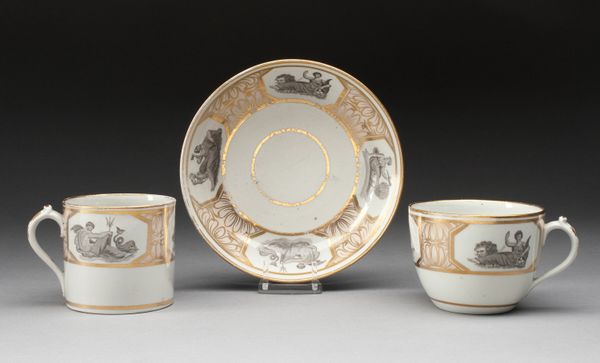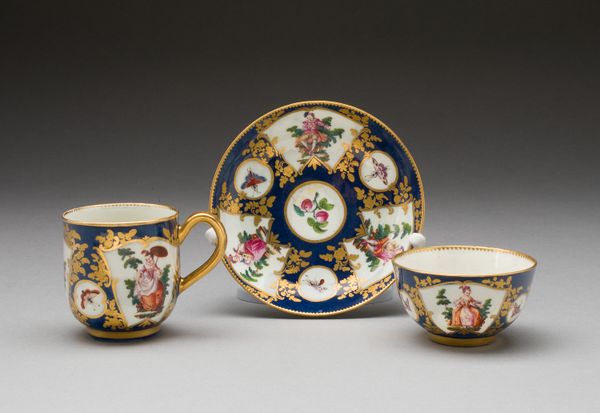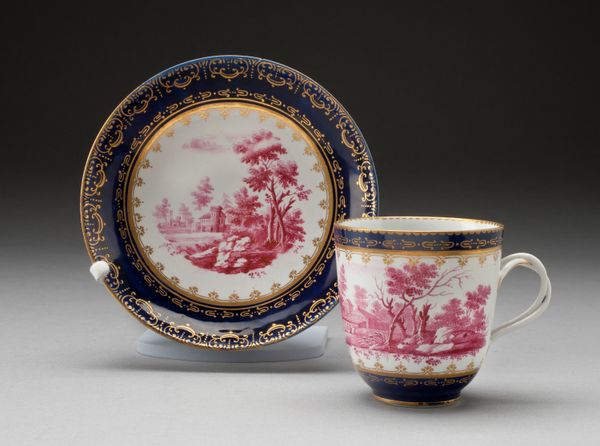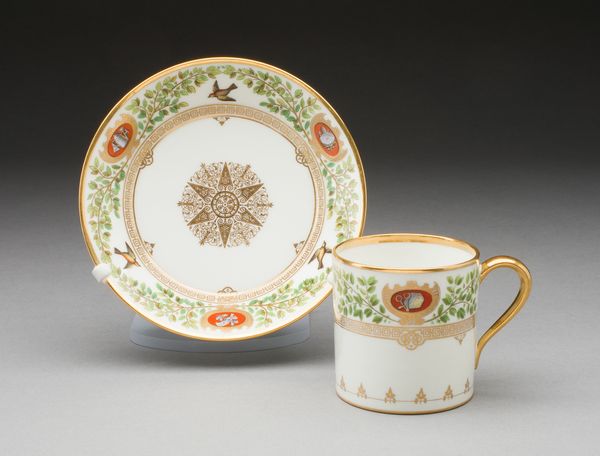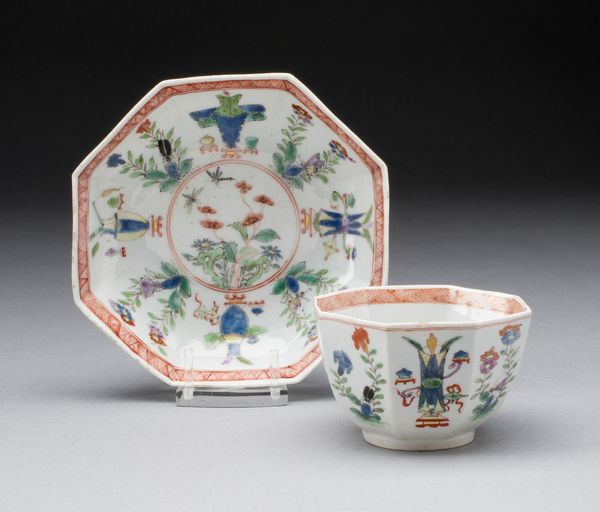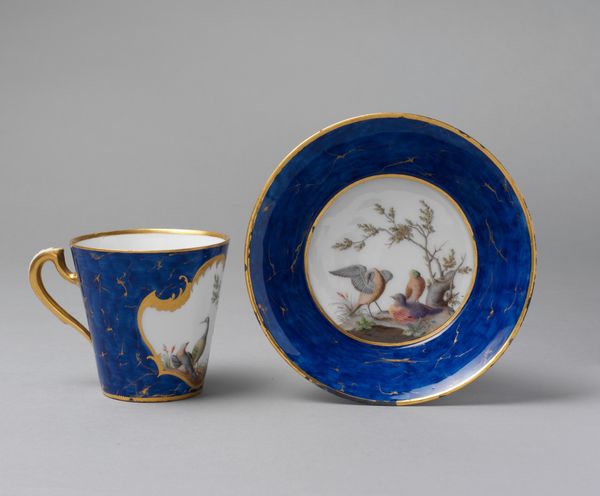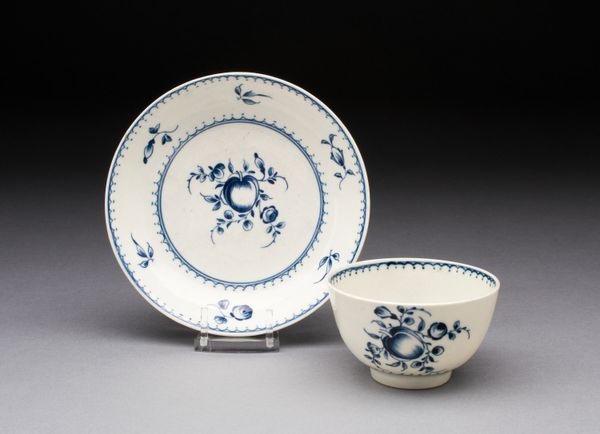
ceramic, porcelain, sculpture
#
neoclacissism
#
ceramic
#
classical-realism
#
porcelain
#
sculpture
#
ceramic
#
decorative-art
Dimensions: Height (cup .337a): 2 1/2 in. (6.4 cm); Diameter (saucer .337b): 5 1/4 in. (13.3 cm)
Copyright: Public Domain
This elegant cup and saucer were crafted by Gotha sometime between 1757 and 1900. Decorative objects like these reflect the cultural values and social hierarchies of their time. The cup and saucer’s Neoclassical motifs reveal the influence of ancient Greece and Rome on European art and design. These motifs aren’t just aesthetic choices; they often symbolized power, intellect, and idealized beauty, concepts embraced by the elite. Owning such pieces was a way for individuals to align themselves with these virtues. But let's also consider the human cost. Porcelain production relied heavily on global trade networks, fueled by colonialism and exploitation. While sipping tea from this cup, one might reflect on the complex layers of history embedded in its delicate form.
Comments
No comments
Be the first to comment and join the conversation on the ultimate creative platform.


